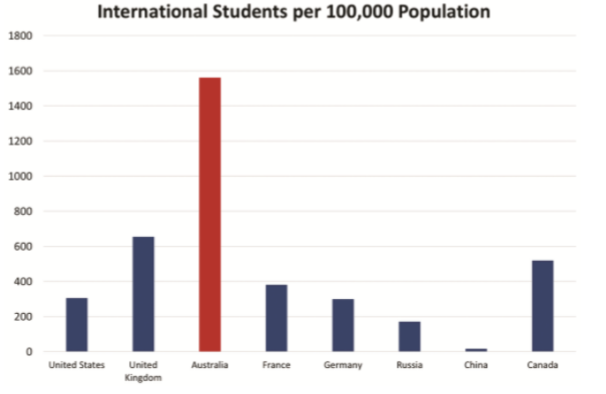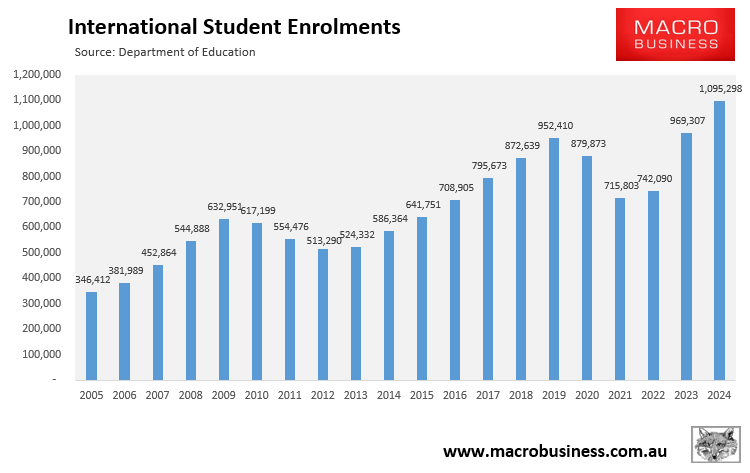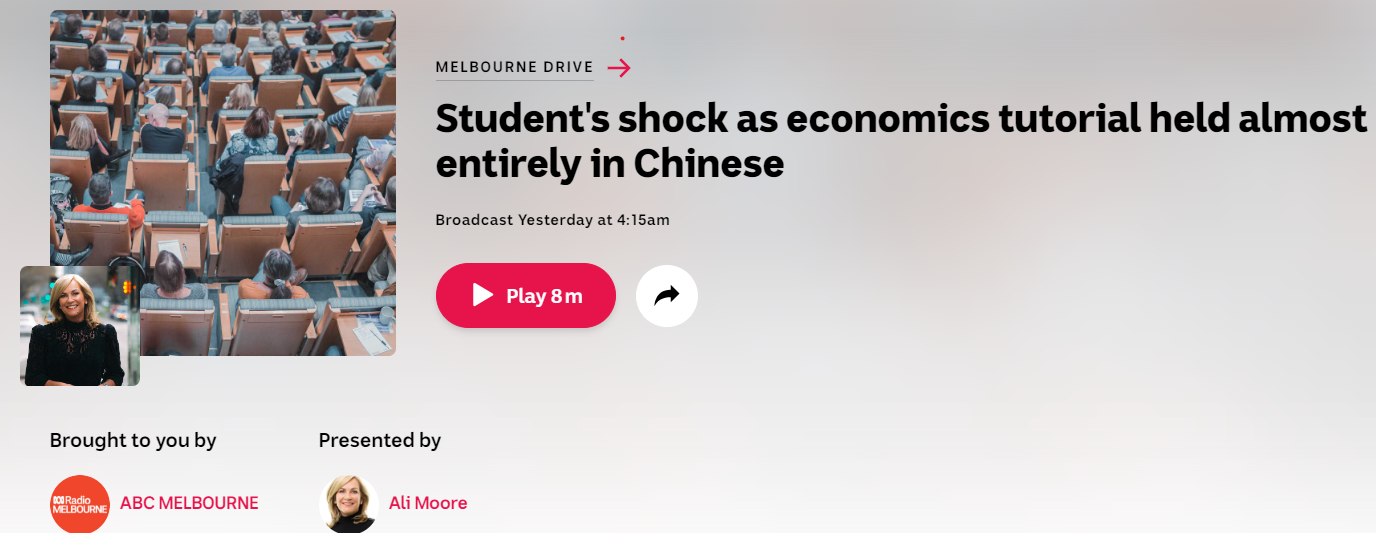Before the pandemic, Australia had easily the highest concentration of international students in the world.

Source: Salvatore Babones (2019)
The international student population has continued to surge post-pandemic, with enrolments hitting a record high of 1.095 million in December 2024.

Enrolments at end-December 2024 were 143,000 higher than the 2019 pre-pandemic peak and more than triple (749,000) higher than the number of enrolments in 2005.
In Thursday’s budget reply speech, Liberal leader Peter Dutton vaguely stated that a Coalition government would reduce the number of international students.
“We will set stricter caps on foreign students to relieve stress on rental markets”, Dutton said in his speech.
Earlier this month, speculation emerged that the Coalition could require universities to reduce the number of foreign students to a percentage of their total numbers or below overseas enrolments in a previous year.
“The Australian understands Peter Dutton’s frontbench has consulted the higher education sector on alternative models to cut back on international students, including capping overseas enrolments to 30% or 35% of a university’s students”.
Such caps would see the number of international students enrolled at major sandstone universities fall.
For example, just over half (51%) of students at Sydney University are international, whereas 48% of students at the University of Melbourne are international.
While both universities rank highly in international rankings, like most Australian universities, they score poorly on the most important metric: teaching.
Whatever approach the Coalition takes, it is imperative that the number of international students is significantly reduced for the sake of the rental market and the economy.
This month, a group of more than 200 ‘old-school’ academics known as Public Universities Australia accused universities of cratering standards, “soft-marking”, and “dumbing down the nation” in the pursuit of international students.
The academics also accused universities of enrolling international students who struggle to speak English.
The academics’ accusations followed claims of widespread cheating across Australia’s universities by international students.

It was also reported that academics working at Australia’s universities were precluded from failing poorly performing international students because it risked their sausage-factory business models:

Some tutorials have even been conducted in foreign languages, degrading the experience for local students.

Businesswoman Catherine Livingstone, who has been chancellor of the University of Technology Sydney for 12 years, lambasted the higher education sector at a conference last month.
Livingstone claimed that universities and their leaders had reaped the gains of international students and lowly paid casualised workforces, but had not accepted responsibility for the criticism that followed when housing shortages and bad press began to plague them.
“We persist with offering opaque and inflated claims of our direct impact”, she told the conference.
“For the community, we’ve been focused on optimising our own economics with ever-increasing numbers of international students, with an apparent tin ear to community concerns on the perceived impact of immigration on housing availability and affordability”.
Livingstone stated that universities were selling degrees that were “becoming increasingly devalued” and that their leaders had somehow forgotten their top priority: domestic students.
The number of international students studying in Australia needs to be more than halved. Australia must focus on quality of quantity by:
- Significantly increasing English-language standards, raising financial requirements, raising entry standards (e.g. via entrance exams), and tightening work rights so that students come here to study and not work.
- Graduate visas must also be rationed and only given to top-of-class international graduates.
- Dodgy private colleges, which act as little more than visa factories, also need to be shut down.
The fact that the Coalition is consulting with higher education sector on alternative models to cut back on international students suggests that any changes will only be minor and not the transformative cuts that are needed.

